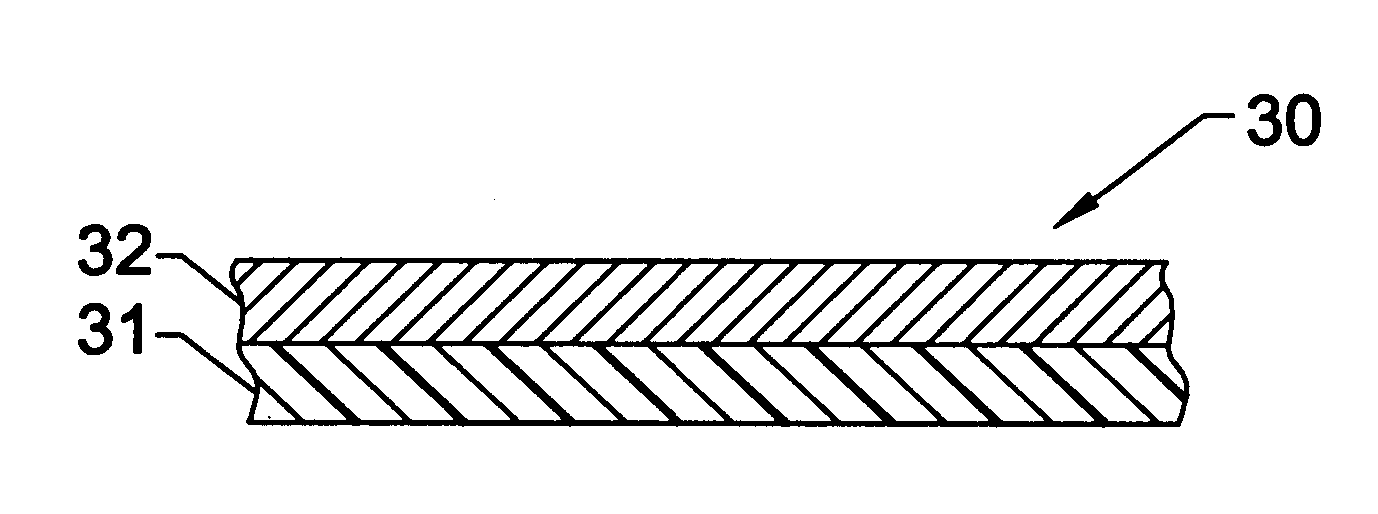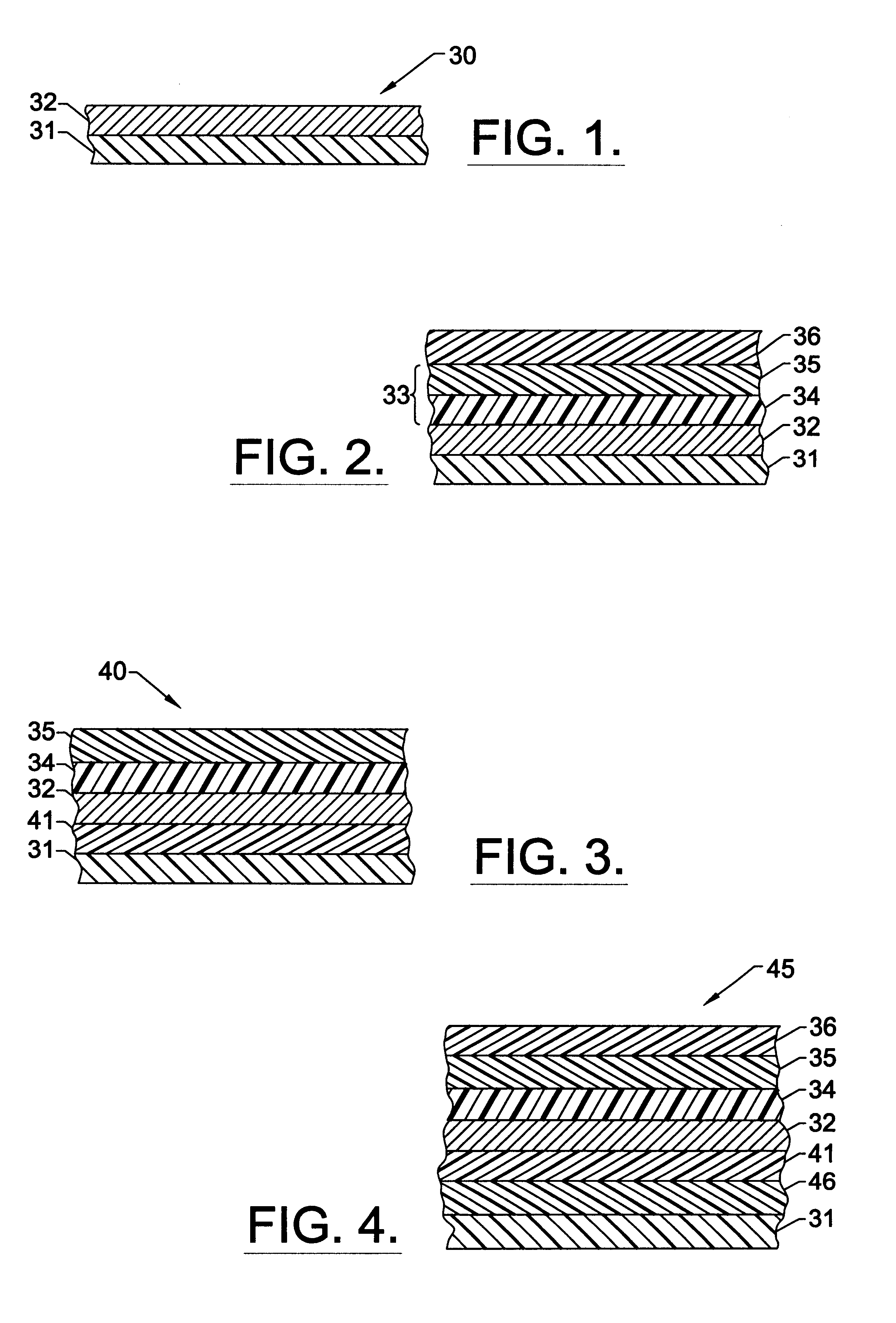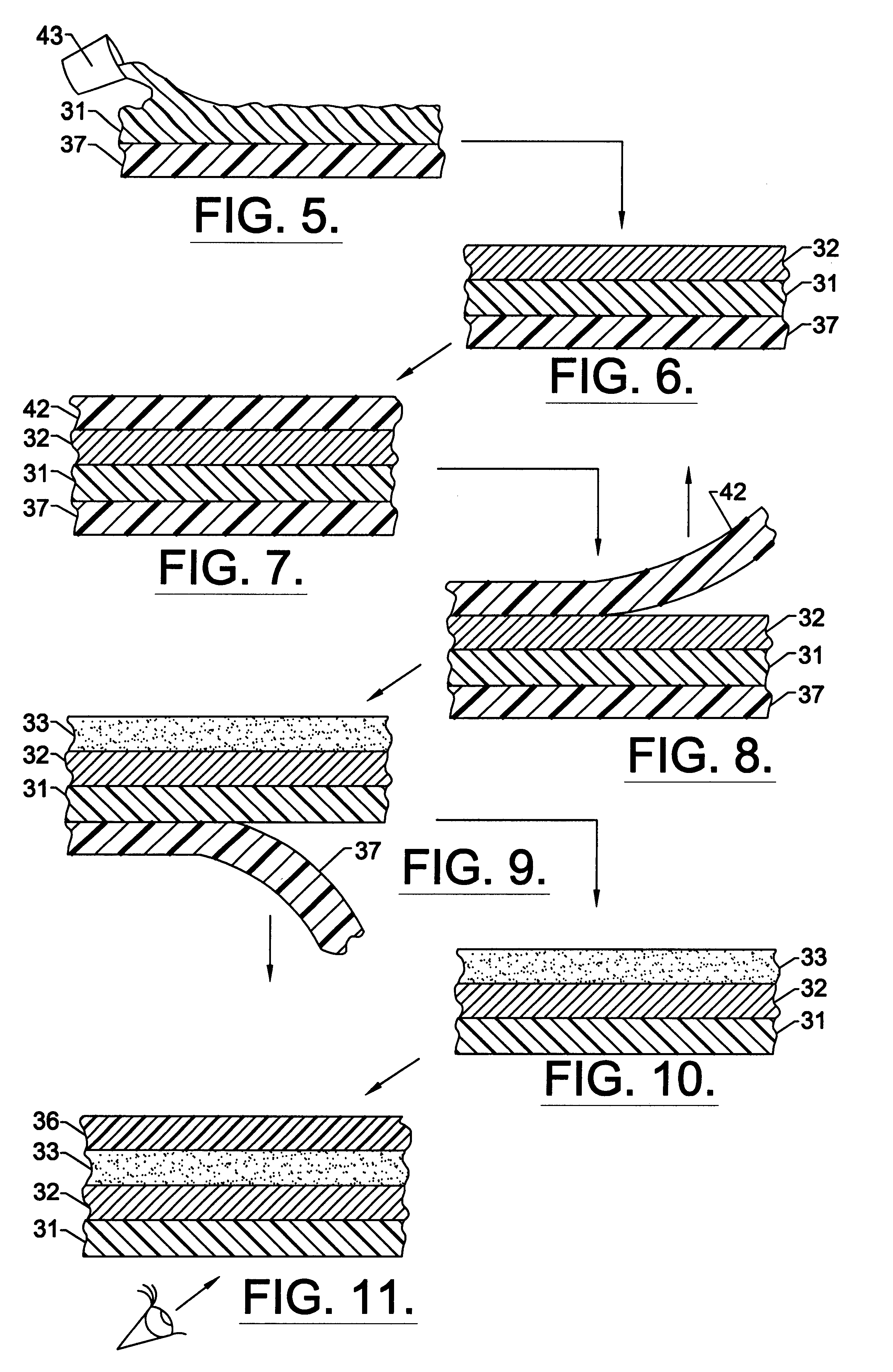Bright metallized film laminate
a technology of metallized film and bright metallization, which is applied in the direction of transportation and packaging, synthetic resin layered products, coatings, etc., can solve the problems of shortening the processing time associated with metallizing three-dimensional articles, disadvantageous deposited metal directly onto articles only after the article has been formed, and customized applications, etc., to achieve superior optical and deformation properties.
- Summary
- Abstract
- Description
- Claims
- Application Information
AI Technical Summary
Benefits of technology
Problems solved by technology
Method used
Image
Examples
example 2
d can include the following steps: casting an acrylic primer layer (Tedlar.RTM. 68070 from DuPont) at a dry thickness of 0.5 mil on FLUOREX.RTM. A; casting a polyurethane layer (SU 6729 from Stahl) at a dry thickness of 0.5 mil on the dried primer layer; depositing a layer of indium at an OD of 1.15 on the polyurethane surface through vacuum deposition; making an adhesive composite by casting an acrylic material (Elvacite.RTM. 2009) at a dry thickness of 0.5 mil on a 2 mil PET; casting a polyurethane (ADH 222 from Novacote.RTM.) at a dry thickness of 0.5 mil on dried Elvacite.RTM. 2009; adding a PET film to the indium surface and press polishing; removing the PET from the indium surface and bonding the ADH 222 surface of the adhesive composite onto the indium surface; removing the PET from the adhesive composite; bonding the composite to a 20 mil ABS through a hot nip at between 330.degree. to 380.degree. F.
The preferred embodiments of the invention and the method of making them are...
first embodiment
FIGS. 5-11 illustrate a method of making the invention. Where possible, the respective layers will carry the same reference numerals as in the previous drawings. Accordingly, FIG. 5 shows that in a first step, the PVDF-acrylic composition is cast onto the layer 31 from an appropriate casting source schematically illustrated at 43, onto a polyester substrate 37. Suitable casting methods include a knife-over roll coating process, a reverse roll coating process, or preferably a slot die coating process. The discontinuous layer of indium islands 32 is then added to the PVDF-acrylic layer 31 resulting in the structure illustrated in FIG. 6. In the next step, a second polyester layer 42 is added for the purpose of press polishing the indium layer 32 in the manner described previously. FIG. 8 illustrates that this polyester layer 42 is then removed leaving the smooth surface of the indium layer 32 behind.
FIG. 9 illustrates the next two steps in which the original polyester layer 37 upon wh...
PUM
| Property | Measurement | Unit |
|---|---|---|
| roughness | aaaaa | aaaaa |
| thickness | aaaaa | aaaaa |
| thickness | aaaaa | aaaaa |
Abstract
Description
Claims
Application Information
 Login to View More
Login to View More - R&D
- Intellectual Property
- Life Sciences
- Materials
- Tech Scout
- Unparalleled Data Quality
- Higher Quality Content
- 60% Fewer Hallucinations
Browse by: Latest US Patents, China's latest patents, Technical Efficacy Thesaurus, Application Domain, Technology Topic, Popular Technical Reports.
© 2025 PatSnap. All rights reserved.Legal|Privacy policy|Modern Slavery Act Transparency Statement|Sitemap|About US| Contact US: help@patsnap.com



